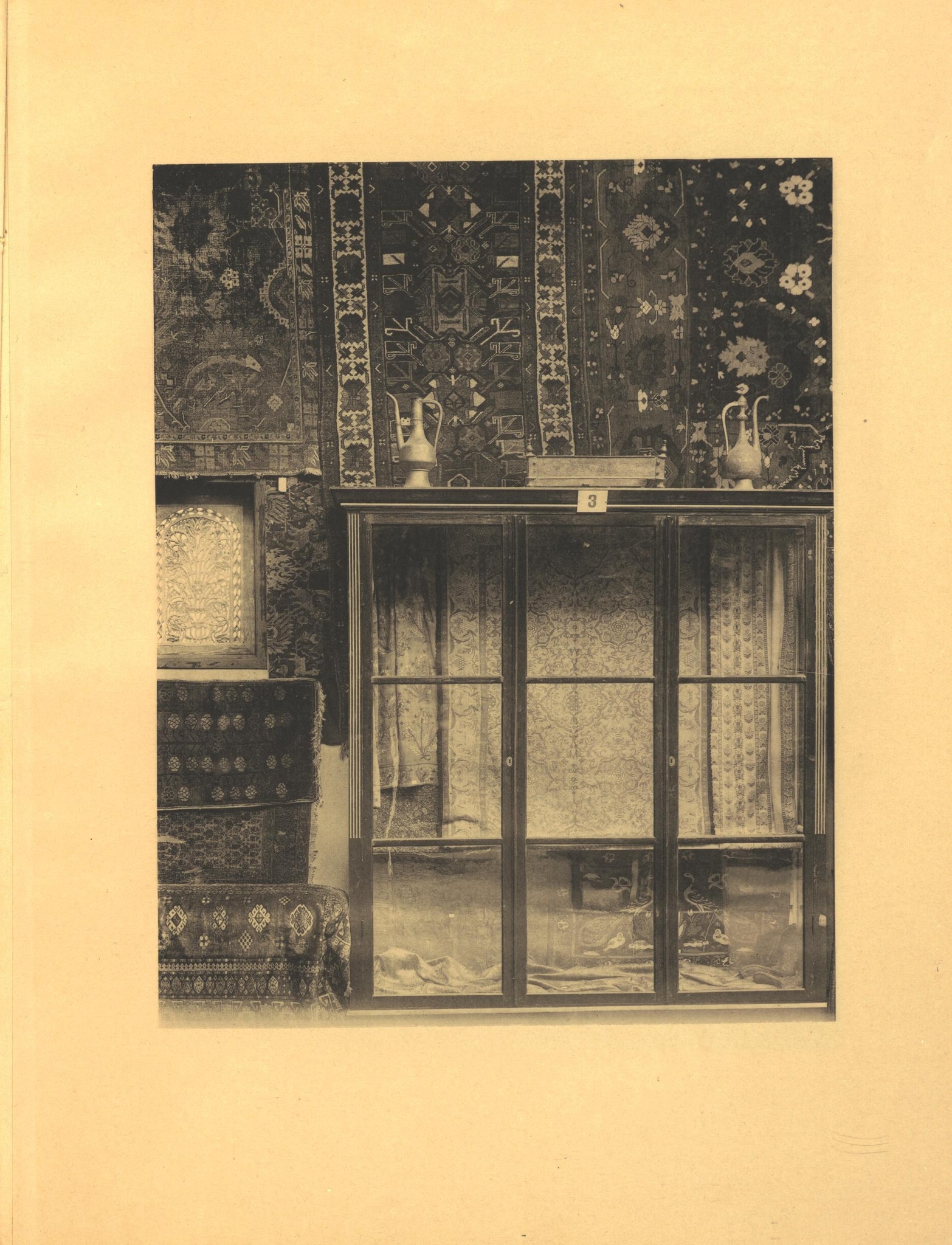Forschung
In the catalogue, the stucco and glass window exhibited next to display case three is characterized as small plaster window from Cairo (‘dem kleinen Gipsfenster aus Kairo’; Martins Sammlung, 1897, p. 4). No dating is given.
Typologically, the flowers in a vase-motif is one of the most common motifs of stucco and glass windows in Western museum collections (for example IG_361, IG_356, IG_7, IG_190). Also, a window in the collection of the Museum of Arab Art in Cairo in the 19th century shows strong similarities in terms of the shape of the vase, the general arrangement of the flowers and the positioning of a simple blossom in the centre (VMR_1387). The picture of this window was widely disseminated, as it was reproduced in several important publications on Islamic art: in 1895 by Max Herz, Catalogue sommaire des monuments exposés dans le Musée national de l’art arabe (IG_161), in 1903 by Julius Franz in Kairo (Berühmte Kunststätten, 21) (p. 115), and in 1907 by Henri Saladin and Gaston Migeon in their Manuel d’art musulman. The typology of flowers in a vase was also documented and disseminated through published drawings in the context of Cairo for example in 1877 by Prisse d’Avennes in L’Art arabe d’après les monuments du Kaire depuis le VIIe siècle jusqu’à la fin du XVIIIe (IG_43), and in the context of the Ottomans in 1873 by Marie de Launay in Die Ottomanische Baukunst / L’Architecture ottomane / Uṣūl-i Miʿmāriyye-i ʿUsmaniyye (IG_225).
Concerning the display strategy, it seems that there was a source of light installed behind the window lattice. This means, the stucco and glass window was not solely exhibited as an object, but the specific quality of the window, its light effect, was deliberately staged. Not only the object was shown, but also its immaterial quality was emphasized.
Datierung
1897
Herstellungsort
